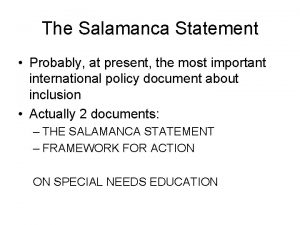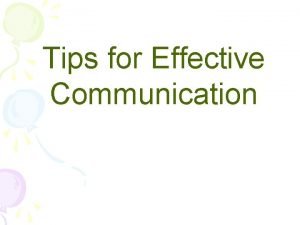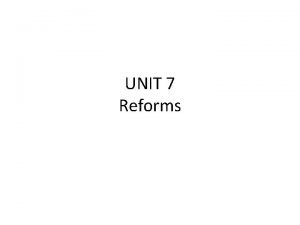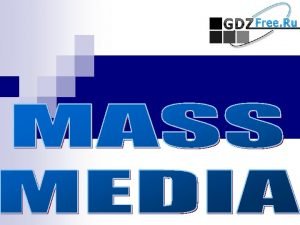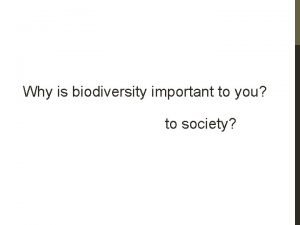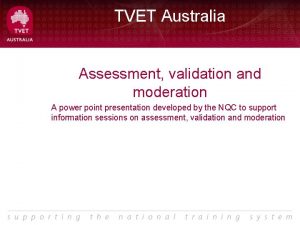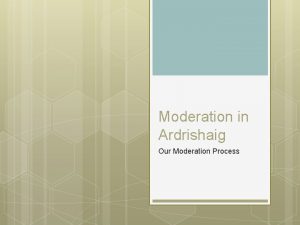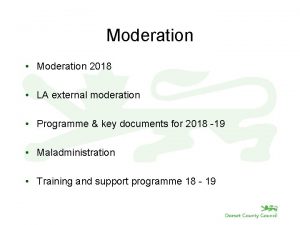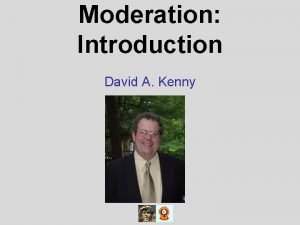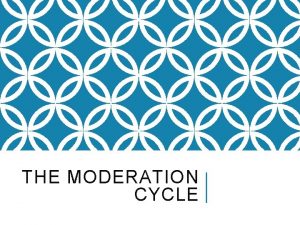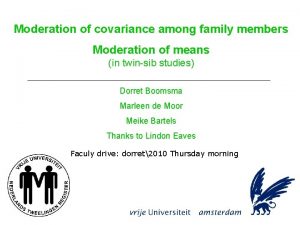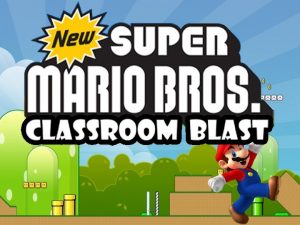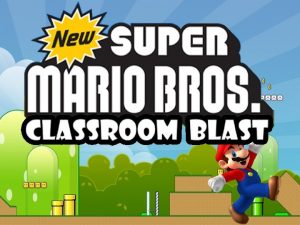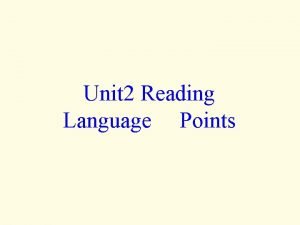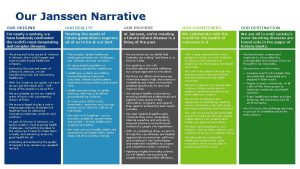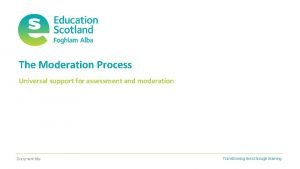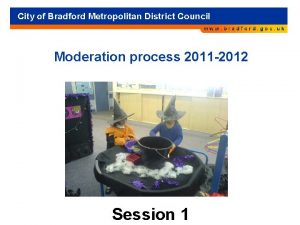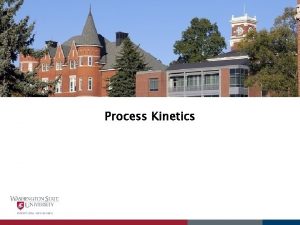Moderation in Ardrishaig Our Moderation Process Important points




























- Slides: 28

Moderation in Ardrishaig Our Moderation Process

Important points to remember: Moderation will work differently in different establishments/clusters. It is about finding what works for you and your children. But the key principles must be applied – you must be reaching a shared understanding of standards and expectations from the planning stages throughout.

Our Aims To develop a whole school understanding of the progression of skills and knowledge in selected curricular areas from E – 2 nd Level and beyond To develop a sustainable and manageable model for moderating pupil attainment (from planning through to assessment) that can be applied to any curricular aspect To ensure that assessment is fit for purpose (valid, reliable, robust)


Selection of theme/context • Leadership • Enterprise • Presenting • Literacy • Numeracy • Health and Wellbeing • Curriculum Areas

Identification key aspects of the skill area Generate ideas that will be potentially profitable, fulfill a niche or provide a service. Create a business plan – including market research and profit/loss forecasts. Follow the plan using skills of selfmanagement and teamwork.

Identification of Es and Os and Learning Intentions in pairs

Understanding the progression Of Es and Os Of LI’s

Working with Pupils in Class We taught the Es and Os and Learning Intentions – build pupil understanding – very different at different stages. Decide on what might be done to demonstrate learning Draw out Success Criteria

Staff Moderate Success Criteria Staff met again to moderate our understanding of Success Criteria, ensure rigor of SC and develop a progression of SCs ensuring we were ambitious and realistic at each level and that value was added Value added = more sophisticated, more knowledge, more skills, more intellectual rigour = more challenge

Teaching and Learning Classes worked in mixed stage groups (early, middle and upper)

Meetings Semi formal after school meetings between stage partners (roughly 1 hour per week) Amend plans, discuss learning, share assessments and evaluations, discuss logistics, share next steps No other staff meetings during this time 1 whole staff meeting to touch base and share learning so far

Assessment and Evaluation Final Outcome and assessment (summary sheet) Teachers and pupils reflect on learning Evaluate skills and knowledge learnt – self and teacher including peer review Evaluate the process – what are pupil views on how effective learning was Teachers met, first in pairs and then as a staff to share assessment findings (against SC) and review the process

Reporting Parents reported back to Learning logs Invitations to learning culmination events

Moving Forward Whole staff together began process from step 1 This time we worked through steps of the process with partner primary school

Important Leadership Points Time freed up from elsewhere Time given to staff (use of CDP budget and cover budget for collegiate half days together) Use of In-service time Less detail required in initial plans at start of term Plans as working docs

Learner Quotes – Enterprise Moderation Project “We were learning how to count money to give the shop keeper and we put the prices for P 1 s under 10 p and the prices for P 2 s between 1 and 20 p so it was harder. ” P 2 girl. “We know what you would need to do if you were the shopkeeper or the shop assistant, you have to be clear if you’re the shopkeeper and know where everything is. ” P 1 boy. “We each had a job, so we had a host, a tour guide, a cashier and a registration person and we each had things to do. We practised our maths and talking and listening skills. ” P 4 boy. “We were doing something we enjoy because we split up into groups and decided that we would like to do an art gallery. ” P 4 girl. “We were developing our communication skills because people were coming to our stall and asking what our product did and if it was good and we needed to give reasons why it was good and why they should buy it. ” P 5 girl.

Cont… “We were given our experiences and outcomes and learning intentions and with that we came up with our success criteria. It was cool to be part of what the teacher does. I liked the idea that we got to choose our own business idea and our own items to sell. ” P 7 girl. “We developed our IT skills when we were researching our product and deciding what we would need for each product and we used our team work skills throughout the whole project because we had to learn to work together with different people or we wouldn’t be successful. We needed to be creative to design our products and we used our time keeping skills because if one week we were behind on something we would have to catch up. At the end we did an evaluation and we knew we were successful because not only had we sold out but we looked at our success criteria and we had achieved them all. ” P 7 girl. “We were working from the same experience and outcome and the same learning intention but had different success criteria, different subjects and different styles of work. It was really interesting to see what another school did with the same thing. ” P 7 boy. “I was impressed when she forgot what she was going to say but she didn’t stop and get embarrassed, she just carried on with the next bit. It makes you more nervous presenting to people you don’t know but you have to get over that and do the presentation you have practised. ” P 7 boy.


Sustainability This process is manageable and sustainable for the following reasons: Planning was less stressful as teachers are working collegiately, making it less time consuming and building confidence and capacity in practitioners to feel like they are ‘doing the right thing’. The children were very much the leaders of their own learning meaning that plans were less detailed and much more of a working document. By developing a process for moderation, teachers can gradually build this into all aspects of the curriculum, as and when they become more comfortable and familiar with it. Having a clear structure allowed practitioners to feel a sense of security. The process reflects the seven design principles and is compliant with the key messages of Bt. C 5.

Easter term… Focus was on non-fiction writing, working from just one E and O…

Simple task Progression of Success Criteria – Early toward third level Complex task LIT 0 -26 a, 1 -26 a, 2 -26 a We are learning to…. share information in a way that communicates my message. select information to create a report that communicates my message. Success Criteria I can… * present information * with support I can that is true. write about what I’ve found out in my own words. * use my listening skills to find out information. * select information about the topic from what I see and hear. *create a report that is neat, tidy and correct. * write a neat report with pictures and a title. * use new vocabulary related to my topic * I can select topic when I am talking. words from a word bank to use in my writing. select information and organise it to create a report to communicate my message. select relevant information to and organise it to create a report which is useful to others. select relevant information from given sources to create a report for a specific audience. * write about what * with guidance I * use the books or I’ve found out in my can use the books websites given to own words. and websites given find information to find information for a research for each question. * select information * choose about the topic information about from what read. my subject which answers a question. answers the questions I have * write a neat * I can use a written. report with writing frame to * I can organise pictures, a title and structure my report my writing under subheadings. that includes subheadings and consider my pictures. layout so it makes sense. * I can select topic * I can use topic words from a range language to give * I can use topic of resources to use information to language which is in my writing. others. suitable for my audience. select relevant information from a range of given sources to create a coherent report for a specific audience. select relevant information taken from independently chosen sources to create a coherent, nonfiction, report containing subject specific vocabulary. * choose sources from a given selection that are suitable for my needs. * record specific information and put it in my own words. * use a range of independently selected sources (internet, books, people) to gather information on each of my subheadings. * gather relevant and concise information and demonstrate an understanding by discussing it in my own words. * organise my information into a coherent non-fiction report * use the features including (a suitable of a report introduction explaining what including a clear will be in the report, a introduction and conclusion to sum up, rounding off nicely. chronological organization where possible, links) * write clear sentences using some technical language. * include subject specific vocabulary and define this in my glossary. * Include my sources at the end – listing what websites or primary sources I used.






 Chapter 10 crafting the brand positioning
Chapter 10 crafting the brand positioning Point of difference and point of parity
Point of difference and point of parity Attendance in work immersion
Attendance in work immersion Salamanca statement summary
Salamanca statement summary Period activism
Period activism How to avoid foolish opinions pdf
How to avoid foolish opinions pdf Why is conduction important
Why is conduction important Body langyage
Body langyage Lucknow pact
Lucknow pact Newspaper article format
Newspaper article format Inverted pyramid in news writing
Inverted pyramid in news writing Least important to most important
Least important to most important What is an important part of mass media
What is an important part of mass media Plantabillion
Plantabillion Thinking affects our language which then affects our
Thinking affects our language which then affects our Our census our future
Our census our future Words to christ be our light
Words to christ be our light Marcus aurelius our life is what our thoughts make it
Marcus aurelius our life is what our thoughts make it We bow our hearts
We bow our hearts Our census our future
Our census our future Our life is what our thoughts make it
Our life is what our thoughts make it Theme of the poem money madness
Theme of the poem money madness Awareness of ourselves and our environment is
Awareness of ourselves and our environment is Awareness of ourselves and our environment
Awareness of ourselves and our environment God our father christ our brother
God our father christ our brother Our future is in our hands quotes
Our future is in our hands quotes Awareness of ourselves and our environment
Awareness of ourselves and our environment Our awareness of ourselves and our environment
Our awareness of ourselves and our environment Validation and moderation service
Validation and moderation service



